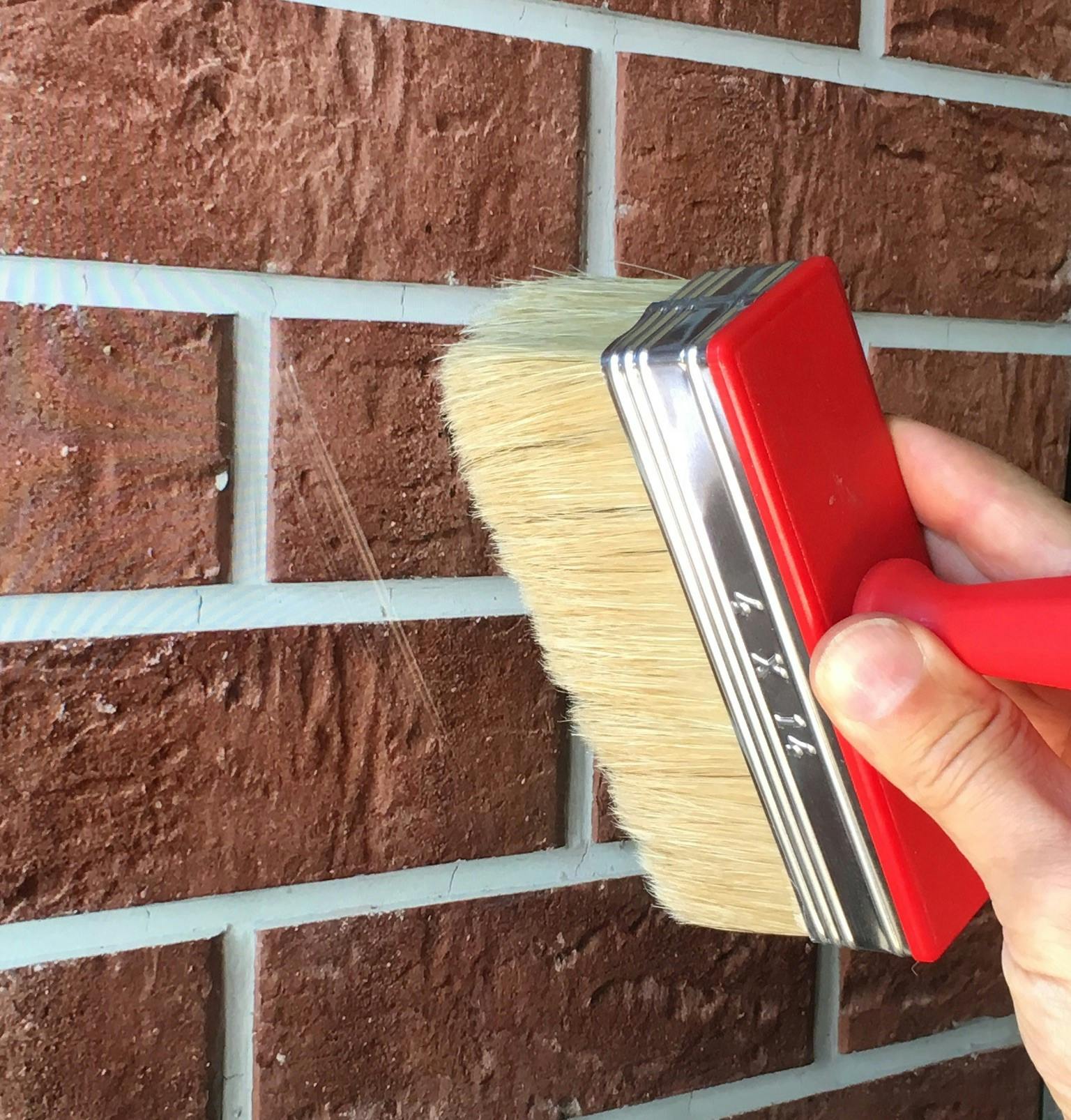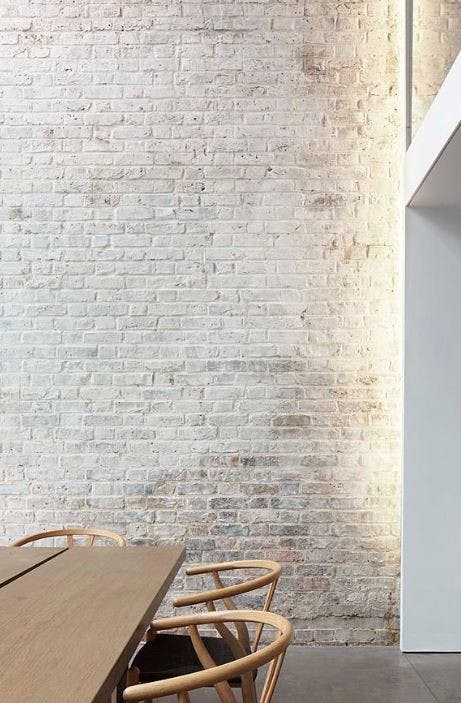Lime Wash Application over Brick Walls
How to prepare a brick wall for painting with lime wash paint
If your bricks have not been painted the procedure is really just three simple steps:
1 remove all nails, screws or other fittings not needed and repair holes, crack and damage with cementitious material (avoid acrylic crack fillers please)
2 remove all dirt and dust (brush it off or on the outside you may be able to use a high pressure water jet)
3 brush on Bauwerk Colour following our application leaflet.
If your bricks were painted before:
remove any flaking or loose paint before point 1, then follow the steps as described above.
We recommend the Lime Wash Paint Block Brush - 3cm x 7cm Red Body to be used on brick walls
Also make sure to hold the brush in the correct angle to the wall(see image below)

see also Lady Carolina Technique Project for a distressed look.
Different White Transparencys
For a semi-transparent look (like on the bottom right hand corner of the photo below) use Transparent White.
For a more covered look as the rest of the photo, use Whitewash for medium cover or Chalk for full opacity.
If your bricks are highly absorbent or you want to control the transparency simply brush on some water before following with your first coat of paint.
Choose the the smaller red brush for a rough brick surface.

Ghosting on brick walls, application, maintenance and consumption
For brick work, as for all masonry, it is best if no sealers are applied to them, particularly in connection with a fully permeable paint system, as is the case with lime wash paints. Through hygroscopic action moisture will be drawn through hairline cracks due to temperature and humidity differences between the outer surface and the inner core of the masonry. There the moisture will be drawn further and stored until full absorption is reached. When the surface reaches as certain temperature pressure similar to a pressure cooker will build up and sealers, as well as film forming paints will begin to blister and peel off.
The right way to prevent ghosting is to apply a two coat rendering system and paint it with a non film forming paint, i.e. lime paint. Lime paint will not blister and peel off and will allow any moisture to freely evaporate, thus preventing the build up of increased / permanent humidity within the masonry structure.
Usually two coats are sufficient to paint new render. Depending on the surface structure and type of aggregate used one liter of paint will cover approximately 7-10m2 per coat.
Maintenance is very easy, simply brush off any dust and apply a fresh coat. There is no need to remove existing lime paint.
When applying lime paint the render received a boost in the PH-Level. At a PH level of 12-14 the surface becomes unsuitable for the growth of mould.
All Bauwerk paint colours are 100% UV stable. They are also completely fire and flame proof.
Regarding application we would recommend to apply the paint by brush. The mechanical action of the bristles layers the pigments and push them into all recesses. With a brush application there is a much better control over the amount of paint applied and no overspray will occur.